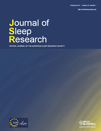Added value of a mandible movement automated analysis in the screening of obstructive sleep apnea
Summary
In-laboratory polysomnography is the ‘gold standard’ for diagnosing obstructive sleep apnea syndrome, but is time consuming and costly, with long waiting lists in many sleep laboratories. Therefore, the search for alternative methods to detect respiratory events is growing. In this prospective study, we compared attended polysomnography with two other methods, with or without mandible movement automated analysis provided by a distance-meter and added to airflow and oxygen saturation analysis for the detection of respiratory events. The mandible movement automated analysis allows for the detection of salient mandible movement, which is a surrogate for arousal. All parameters were recorded simultaneously in 570 consecutive patients (M/F: 381/189; age: 50 ± 14 years; body mass index: 29 ± 7 kg m−2) visiting a sleep laboratory. The most frequent main diagnoses were: obstructive sleep apnea (344; 60%); insomnia/anxiety/depression (75; 13%); and upper airway resistance syndrome (25; 4%). The correlation between polysomnography and the method with mandible movement automated analysis was excellent (r: 0.95; P < 0.001). Accuracy characteristics of the methods showed a statistical improvement in sensitivity and negative predictive value with the addition of mandible movement automated analysis. This was true for different diagnostic thresholds of obstructive sleep severity, with an excellent efficiency for moderate to severe index (apnea–hypopnea index ≥15 h−1). A Bland & Altman plot corroborated the analysis. The addition of mandible movement automated analysis significantly improves the respiratory index calculation accuracy compared with an airflow and oxygen saturation analysis. This is an attractive method for the screening of obstructive sleep apnea syndrome, increasing the ability to detect hypopnea thanks to the salient mandible movement as a marker of arousals.




